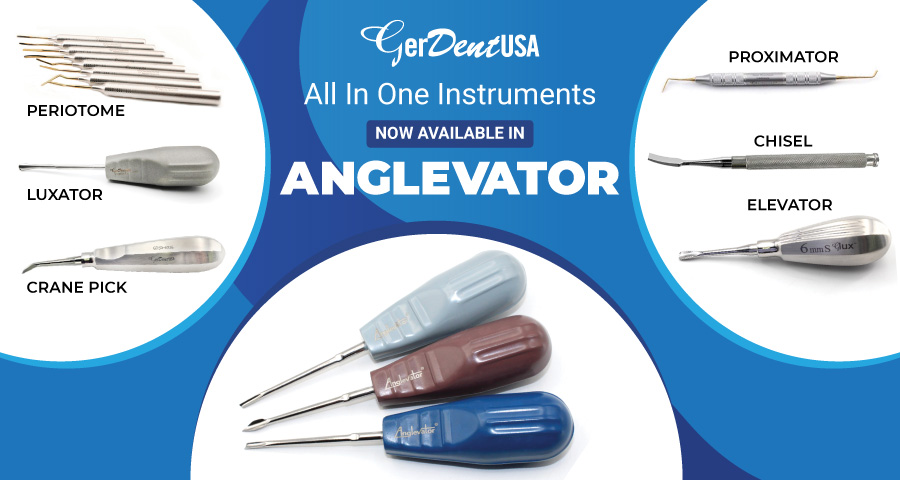What are dental calculus remover tools? What are the dentist teeth cleaning? How to remove plaque? Calculus is a hardened plaque that is found on your teeth. It is a result of the mineralization of plaque, which is the layer formed on teeth.
This layer is the result of food particles that stick to the teeth. The bacteria acidify food to form plaque. Plaque is generally removed by good oral hygiene habits.
Good oral hygiene habits include a proper brushing and flossing routine. However, if calculus forms on the teeth, it is difficult to remove by brushing only.
Hence it needs professional care. Calculus is removed at the dentist's clinic. There are many dentistry instruments used to remove calculus. Instruments for subgingival calculus removal are discussed below.
Calculus not only forms supra gingival but is also formed subgingivally. This can only be treated at the dentist's clinic. Subgingival calculus is detected by a periodontal probe. It is although removed by scalers and other scaling instruments.
Dental Scaling Instruments
1) Hand instruments
2) Sonic and ultrasonic instruments
3) Reciprocating instruments
4) Ablative laser therapy
Hand instruments include scalers and curettes. Scalers for subgingival calculus removal are hoes, chisels, and files. Curettes also remove subgingival calculus.
Hoe Scalers
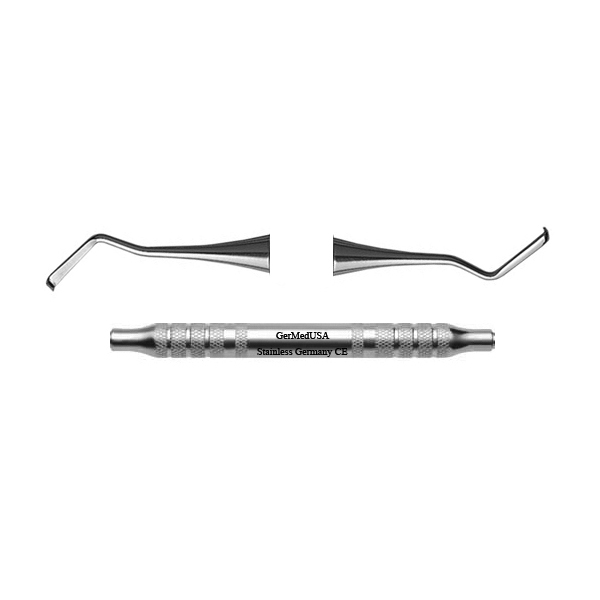
Dental hoe instruments or hoe scalers are hand instruments that remove rings or ledges of calculus. This is from the cervical third of the crown. Their blades are bent at 99 degrees to the shank. They come in use for removing calculus from deep and narrow pockets. Furthermore, they also remove deposits from concave root surfaces.
While using the hoe scaler, two-point contact on the tooth surface should be ensured. This two-point contact of the blade ensures that the tooth is not being nicked. This also ensures the stabilization of the instrument.
Chisel Scalers
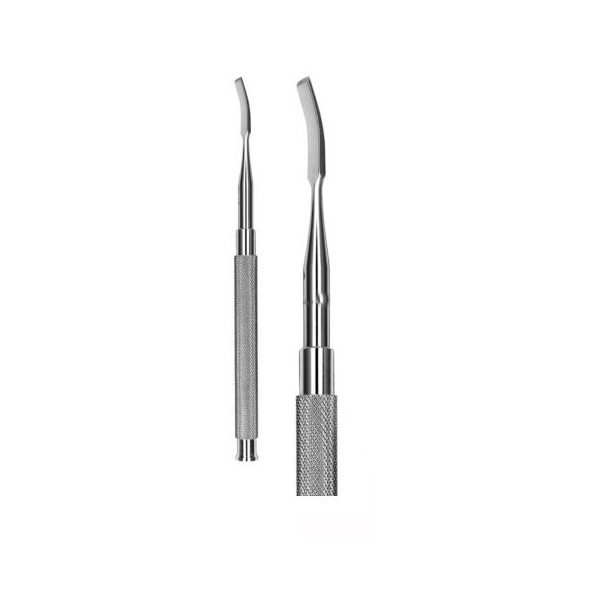
These chisel scalers have two working ends. One end has a curved shank and the other end has a straight shank. The instrument is activated by a push motion. The blades are curved with a straight cutting edge.
Dental Files
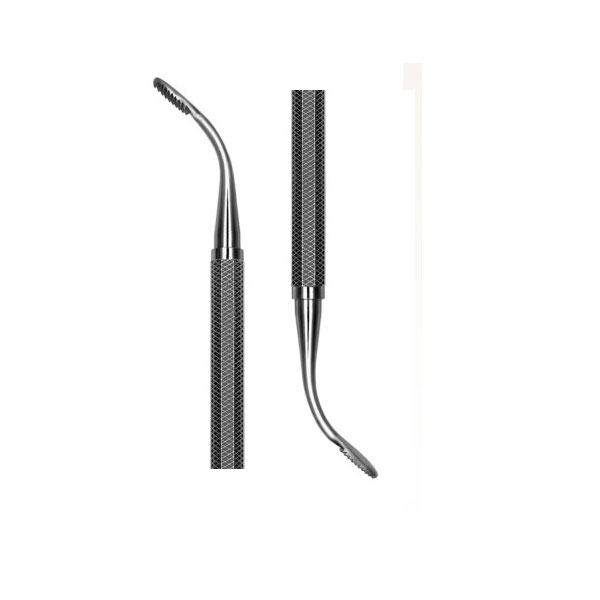
These are to fracture large tenacious deposits of calculus. They are not appropriate for fine scaling and root planning. They also come in use for removing over-hanging dental restorations.
Curettes are instruments that remove deep subgingival calculus. They also remove soft tissues lining the periodontal pocket. Also, they come into use for removing altered cementum and root planning. Curettes have two working ends and each end has a cutting side.
Along with the cutting side, each end has a rounded toe. Curettes are finer than sickle scalers. Also, these instruments adapt well to deep pockets. They cause minimal trauma to the soft tissues.
Universal Curettes
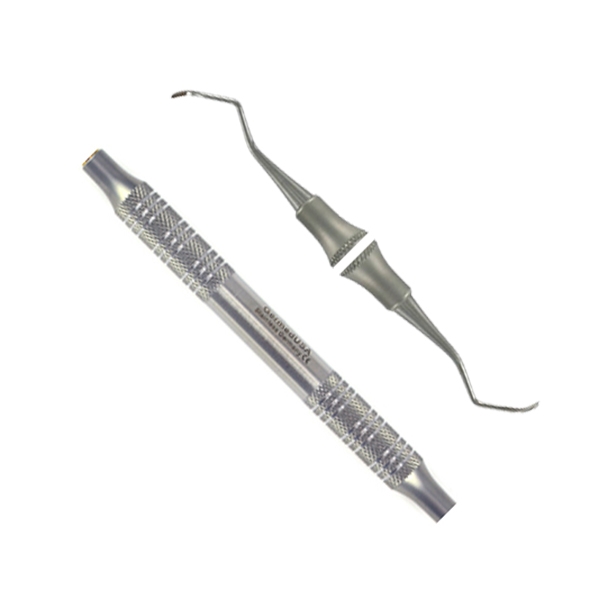
These are instruments that come in use for the removal of calculus from any area of the mouth. This is made possible by adapting and altering the hand position and finger rest of the operator.
The blade is at a 90-degree angle to the shank. Some examples of universal curettes include Barnhart curettes, Columbia curettes, and McCall’s curettes.
Design Of The Universal Curettes:
All scaling hand dental instruments have a handle, shank, and Blade. The blade for the universal curette has many different design characteristics. It has a rounded back and a round toe.
The curette has a semicircular cross-section. Furthermore, its blade has two cutting edges on each working end. The face of the blade is at 90 degrees to the lower shank of the instrument.
Area-Specific Curettes
These are instruments that remove calculus from a specific area of the mouth. The area-specific curettes include Gracey curettes. These instruments have long shanks that remove light calculus deposits. The calculus deposits are removed from the surface of crowns and roots.
Their design makes them well suited for dislodging calculus within deep pockets. These instruments have an offset blade which is at 60 to 70 degrees from the shank. The angle allows the blade to be inserted at an appropriate angle. This is for debridement subgingivally.
The area-specific curettes have a curved blade. Furthermore, a pull stroke is used for these curettes. Besides that, area-specific curettes have two varieties for their shanks.
They come with rigid or finishing type shanks. The rigid shanks come in use for removing moderate to heavy deposits of calculus. They have larger, stronger, and less flexible shanks than finishing graceys.
Gracey Curettes
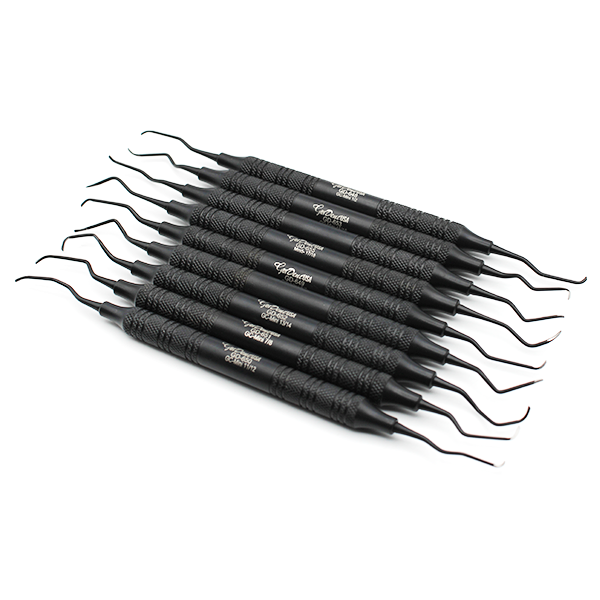
Gracey curettes are double-ended area-specific curettes. These are paired and numbered. The Gracey curette 1, 2 and 3, 4 are for use in the anterior teeth.
5, 6 is for use on the anterior teeth and premolars. 7, 8 and 9, 10 are for use on the facial and lingual surfaces of posterior teeth. Curettes 11, 12 are for use on the mesial surfaces of posterior teeth. The 13, 14 Gracey curette is for use on the distal surfaces of posterior teeth.
The Gracey 15, 16 is a modification of the 11, 12 and 13, 14 Gracey curette. It combines the 11, 12 curette with a more curved shank than a 13, 14 curette shank. This modification is to allow good mesial adaptation from the front.
Extended Shank Curettes:
These are also known as after five curettes. These curettes have long shanks that allow extension into deep pockets. The shanks are 3mm longer than regular curette shanks.
They have a thinner blade which also helps in insertion subgingivally. They have a large diameter. All Gracey curettes are available after five, except for Gracey 9 and 10.
Quetin Furcation Curettes
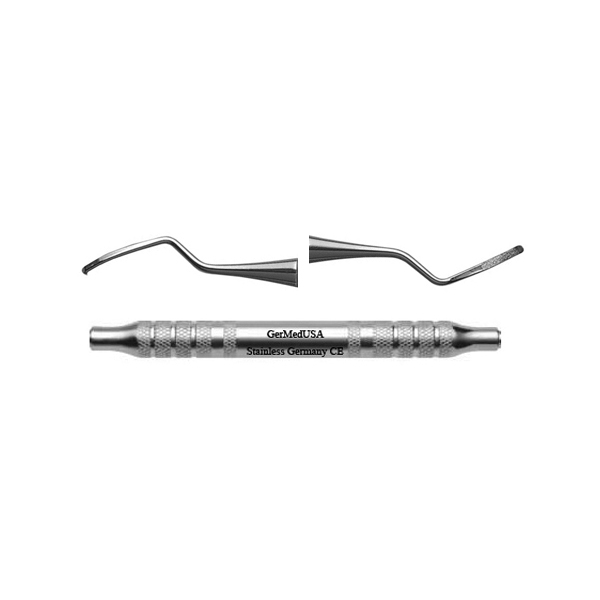
These have a design that can fit onto the roof or floor of the furcation. These are Hoe-like instruments. They have curved shanks for better access in the furcation areas.
They come in use for removing calculus from areas with gingival recession. They also come in use for removing calculus from areas with furcation involvement. This instrument has a curved tip. The tip fits into the developmental grooves of the root furcation.
Ultrasonic And Sonic Scalers:
These are of two types, Magnetostrictive and piezoelectric. They are for removing plaque calculus and stains. An alternating current generates oscillation in the scaler tip and makes it vibrate. The vibrations range from 20000 to 45000 cycles per second.
The magnetostrictive unit has an elliptical vibration pattern. This generates heat and requires a water cooling spray. The piezoelectric unit has a linear vibration. Its tip has two active sides. This unit does not generate heat but it requires a water spray to clean away the debris.


